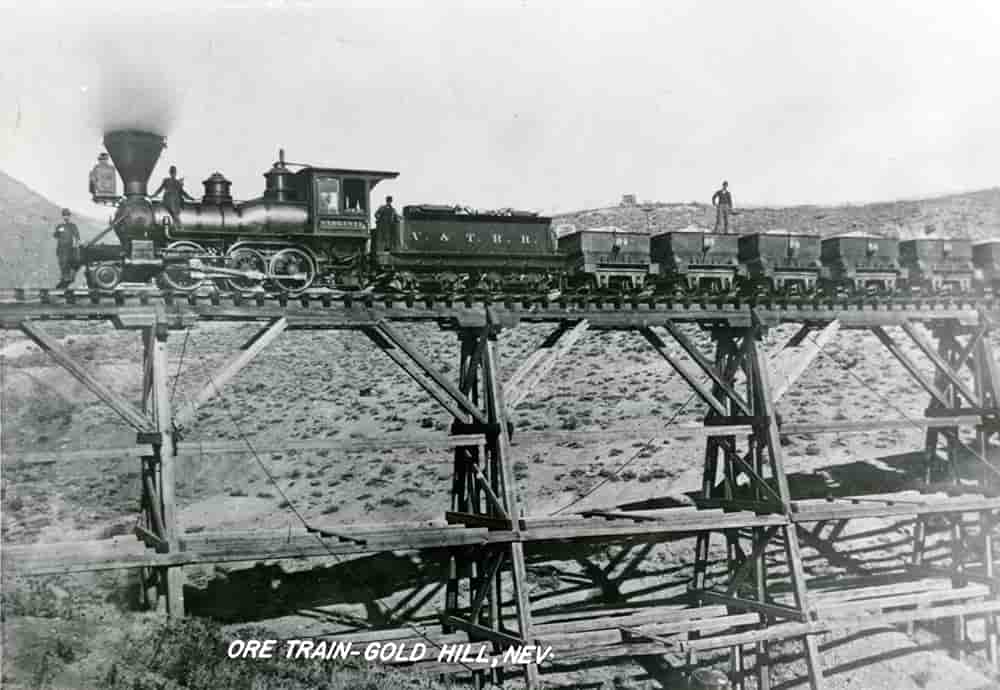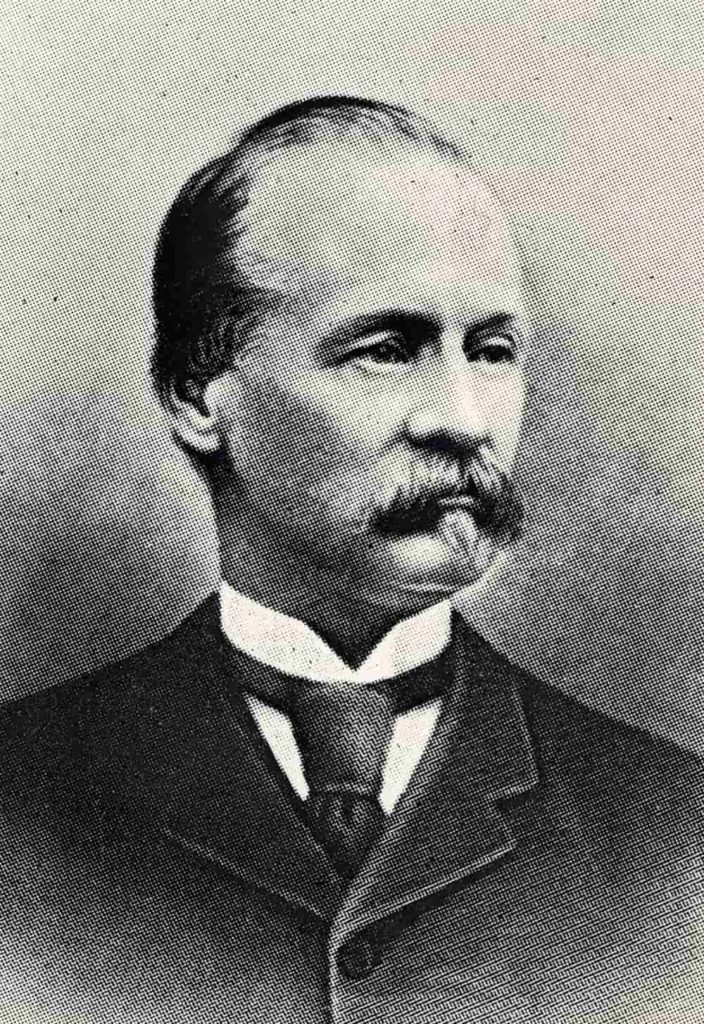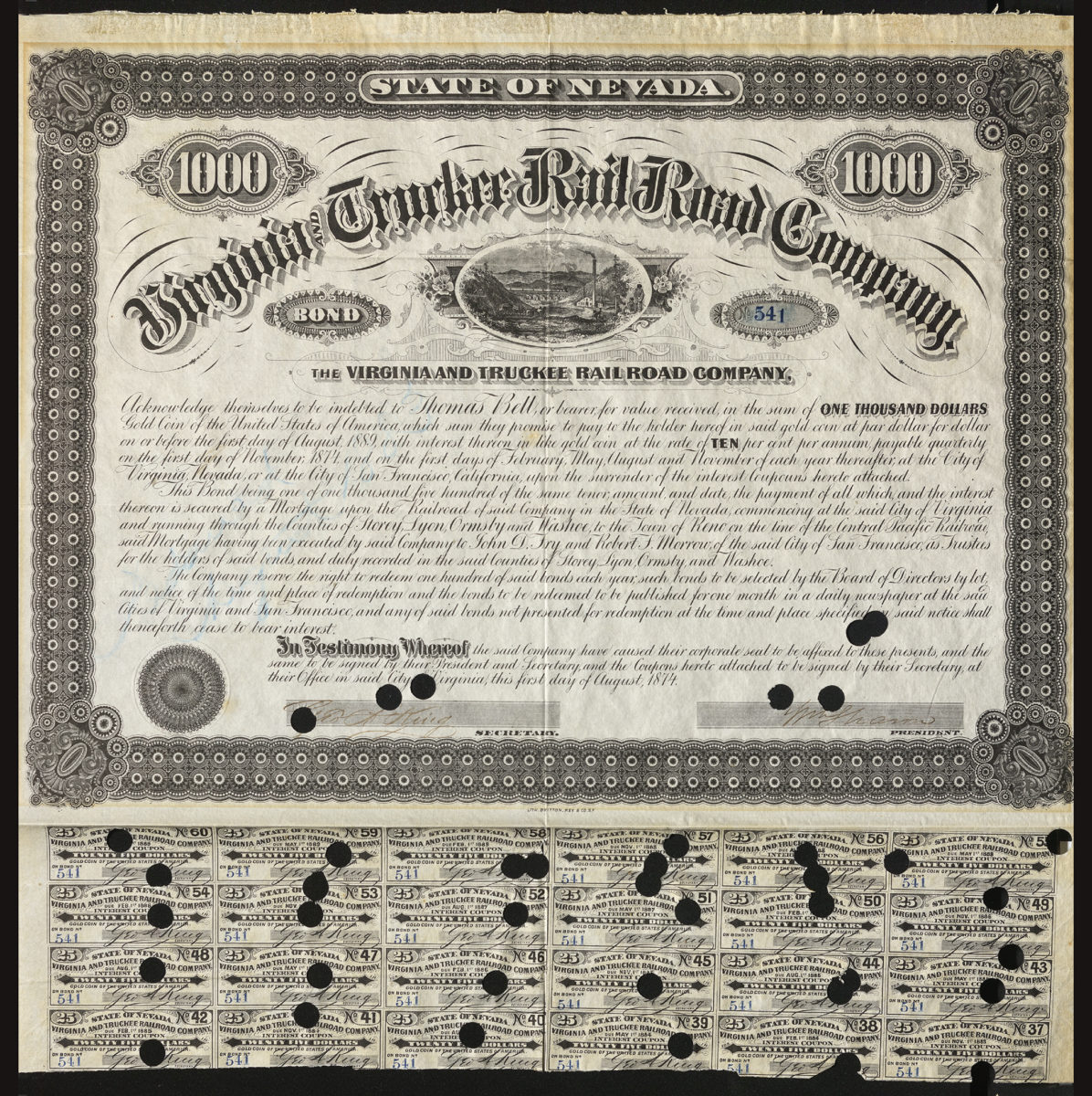
Queen of the Short Lines: The Virginia & Truckee Railroad
The construction of the Virginia & Truckee Railroad by Virginia City’s Bank Crowd, led by William Sharon, extended the Bank of California’s monopoly in Virginia City.
Header Image: The Virginia and Truckee Railroad transports a shipment of ore from the Comstock Lode; courtesy Special Collections Department, University of Nevada, Reno Libraries [1].
“Sharon represented changing times, corporate control, and the loss of frontier honesty and self-reliance.”

William Sharon, founding director and president of the V&T Railroad, was one of the leading figures of the Comstock’s Bank Crowd; courtesy Wikimedia Commons
The Virginia and Truckee Railroad, also known as the Queen of the Short Lines and the V&T, was invaluable to the success of the Comstock Lode. Construction of the railroad began in 1869, and by 1872 lines connected Virginia City, Carson City, and reached the transcontinental Central Pacific Railroad in Reno. Construction of the railroad was a great feat of engineering in this mountainous terrain, where the track made so many twists and turns it earned the nickname the Very Crooked and Terribly Rough Railroad.
The railroad greatly reduced the costs of transporting goods to Virginia City—like the lumber used to shore up the mine shafts—which had previously relied on wagons. It likewise reduced the costs of shipping ore from the Comstock, allowing the mines to increase profits by working lower-grade ore that had at one time been cost-prohibitive. When the railroad reached Virginia City, the first ore shipped from the famous Yellow Jacket Mine was of a grade low enough it had previously been used to fill abandoned shafts.
The Virginia and Truckee Railroad served the Comstock for several decades before falling into disuse in the early 1900s as mining waned and the train began competing with the automobiles. The lines closed by the 1950s and track was removed and sold. A private investor, Robert C. Gray, who had been a passenger on the last train to Virginia City in 1938, revived the V&T in 1976 as a popular historical tourist attraction. It is still running today.
It is common belief that the Virginia and Truckee Railroad is featured on the Great Seal of the State of Nevada. Though the vignette on this bond showing the Crown Point Railroad trestle is quite similar, the seal was in fact adopted in 1866 before the railroad existed—before any steam railroads existed in Nevada.
As historian Guy Rocha and journalist Dennis Meyers observe, “It makes a better story this way. (The railroad’s) inclusion by lawmakers in such an important state symbol was an act of faith in Nevada’s future, knowing the nation’s first transcontinental railroad would run through the heart of the Silver State.”
This certificate is associated with two figures of note in the history of the Comstock: William Sharon, who has signed as the company’s president and Thomas Bell, who was a director of the V&T Railroad and of the Bank of California that played a large role developing the Comstock Lode. Sharon first came to Virginia City as a representative of the Bank of California and was a central member of the ‘Bank Crowd,’ a group of San Francisco bankers who controlled the Comstock around 1865–1875. Thomas Bell is best remembered for his relationship with the unusual character of Mary Ellen Pleasant, a wealthy African American entrepreneur and abolitionist in San Francisco. (Scroll down to continue reading about the V&T Railroad below)
As husband and wife, Bell and Pleasant amassed a fortune of millions of dollars. Pleasant used this money—including investments in the Comstock—and her social influence to support African American freedom and civil rights. When Pleasant supported Sarah Althea Hill in a divorce lawsuit against William Sharon, his attorney claimed that Sharon was victim of a plot led by Pleasant. She was accused of using voodoo and other sinister methods to try to steal his fortunes; marginalized as an African American Woman, similar accusations were made against her after Thomas Bell died and ultimately led to her losing her entire estate.
Sharon was notorious for his ruthless tactics. From his earliest days on the Comstock, he attracted customers to the Bank of California by offering low rates, and when clients defaulted on their loans, Sharon swooped in to foreclose on mines and mills. He then lowered prices at his mills to steal business, driving even more businesses into foreclosure. Through this, the Bank Crowd was able to monopolize mining on the Comstock and profit considerably. The Virginia and Truckee Railroad was part of this power-grab; Sharon was a founding director and served as president of the company.
 University of Nevada, Reno
University of Nevada, Reno
